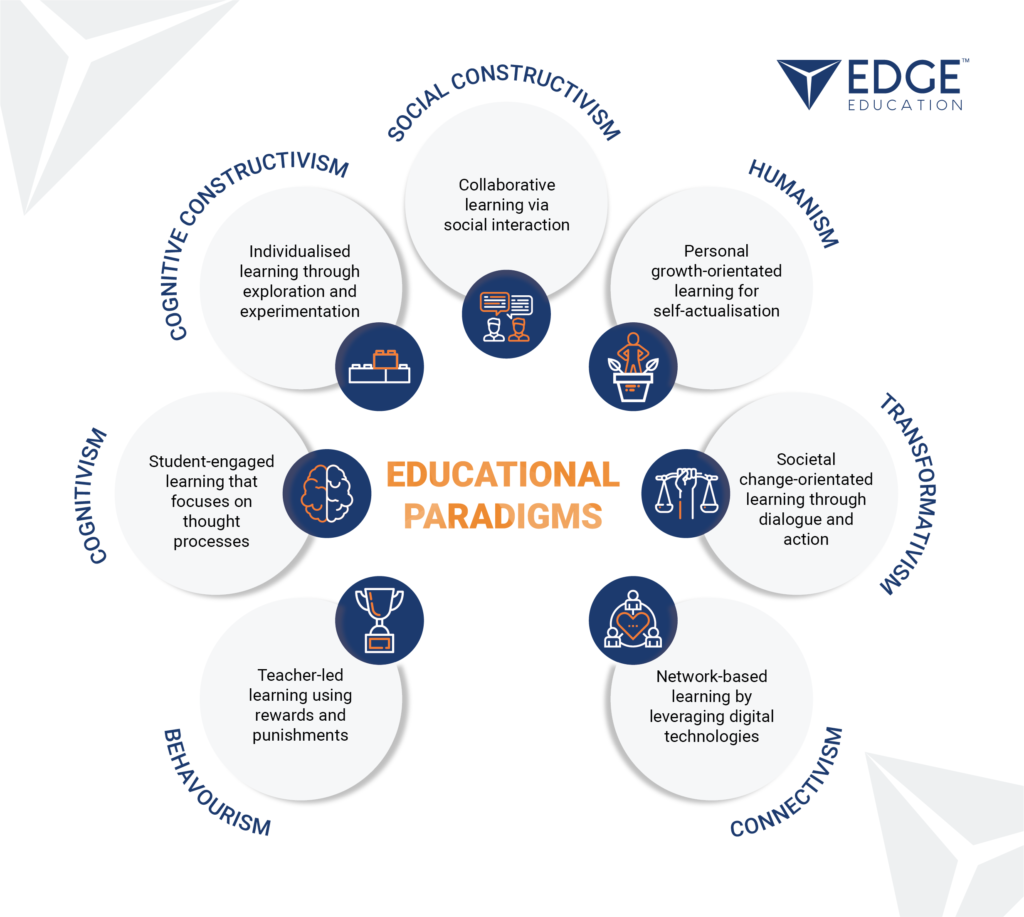At EDGE, we are driven by our passion for creating unparalleled learning experiences for both students and educators. We believe that empowering educators – the architects of the future – is a lifelong endeavour. As part of our commitment to this mission, we have been on a deep exploration of our educational philosophy, and we believe that refining your own educational philosophy would benefit you too. Let’s delve into why this is important.
Your personal educational philosophy serves as a compass in your teaching journey. It encapsulates your beliefs about education, thereby influencing every decision in your teaching practice. This philosophy can be likened to a blueprint for effective learning and teaching – the clearer and more comprehensive it is, the better the results. Reflecting on and refining your educational philosophy paves the way for more effective teaching and learning, and it sets the stage for continuous professional growth and improvement.
So, how do you begin refining this blueprint? Start by asking yourself a few fundamental questions. ‘What is the purpose of education?’, ‘How do I believe people learn?’ and ‘How do these views shape my role as an educator?’ are all great starting points. Your answers will help you to outline your teaching strategies, define success metrics, and shape the learning environment that you aim to create. If, for instance, you view education as a tool for equipping students with knowledge to remember and apply, you may believe in a more structured approach to learning and teaching. This belief, in turn, could shape your role as an educator to one who creates a learning environment that facilitates optimal processing and who engages different cognitive processes in students deliberately. This collective understanding forms the foundation of your personal educational philosophy, which is further influenced by educational paradigms.
Understanding educational paradigms is key to creating a meaningful educational philosophy. These paradigms, or lenses, shape our perceptions and decisions about education, including the role and purpose of education, the learning process, and what teaching should look like. Let’s briefly explore seven prevalent paradigms of education, namely behaviourism, cognitivism, cognitive constructivism, social constructivism, humanism, transformativism and connectivism. Each of these paradigms offers a unique perspective on teaching and learning.
- Behaviourism focuses on shaping student behaviours through reinforcement and punishment. Behaviourist educators are likely to assume the role of authority figure, viewing students as passive recipients of knowledge.
- Cognitivism centres mental processes like attention, memory and problem-solving. Cognitivist educators aim to actively engage students’ cognitive processes to facilitate a change in their mental schema.
- Cognitive constructivism promotes active knowledge construction by students. Cognitive constructivist educators facilitate an active learning environment in which students explore and experiment.
- Social constructivism values social interaction and collaboration in learning. Social constructivist educators encourage dialogue, fostering a space for the co-creation of knowledge.
- Humanism emphasises individual growth and self-actualisation. Humanist educators aim to create a supportive environment that helps students to realise their full potential.
- Transformativism seeks to effect societal change, emphasising social justice and equity. Transformative educators strive to foster dialogue, critical reflection and informed action.
- Connectivism emphasises networked learning and digital technologies. Connectivist educators encourage experimental learning and strive to connect students to networks of knowledge.
Although these descriptions are brief, they provide a foundational understanding of the educational paradigms that can inform your teaching philosophy. The following infographic presents a summary of each paradigm.
Now, let’s consider how you can apply these paradigms in practice. If you resonate with behaviourism, you may incorporate more positive reinforcement, like praise or rewards, in your teaching to encourage desired behaviour and learning outcomes. If cognitivism aligns with your beliefs, consider strategies that engage mental processes, such as problem-solving exercises or memory games. Supporters of cognitive constructivism could provide students with more opportunities to explore and experiment, while guiding them to develop their own understanding of the subject matter. If you value social constructivism, you could facilitate more group work and collaboration. If you lean toward humanism, you can develop individual learning plans that focus on students’ unique needs and goals. Fans of transformativism may encourage students to engage in discussions that critically examine societal norms and power structures. Lastly, if connectivism speaks to you, leverage digital technologies to connect students with a multitude of information sources.
Importantly, you need not prescribe to one single paradigm. Your personal educational philosophy might consist of several paradigms, drawing on the strengths of each. In the next article, we will look at how a number of the paradigms overlap with each other.
By understanding and applying these paradigms, you can elevate your teaching practice, fostering a more engaging, effective and enriching learning experience for your students.
Stay tuned for more insights from EDGE. In our upcoming articles, we will delve deeper into these educational paradigms. We are excited to share our knowledge and insights with you, because we believe that, together, we can shape the future of education and empower the next generation of learners. So, let’s continue growing, exploring and pushing the boundaries of what’s possible in education. Your journey toward elevated teaching begins now.


